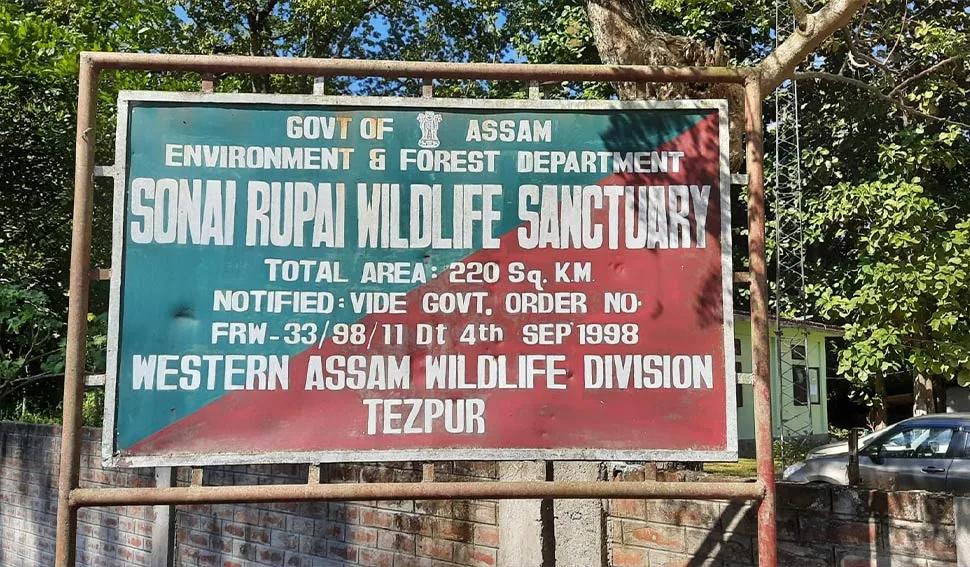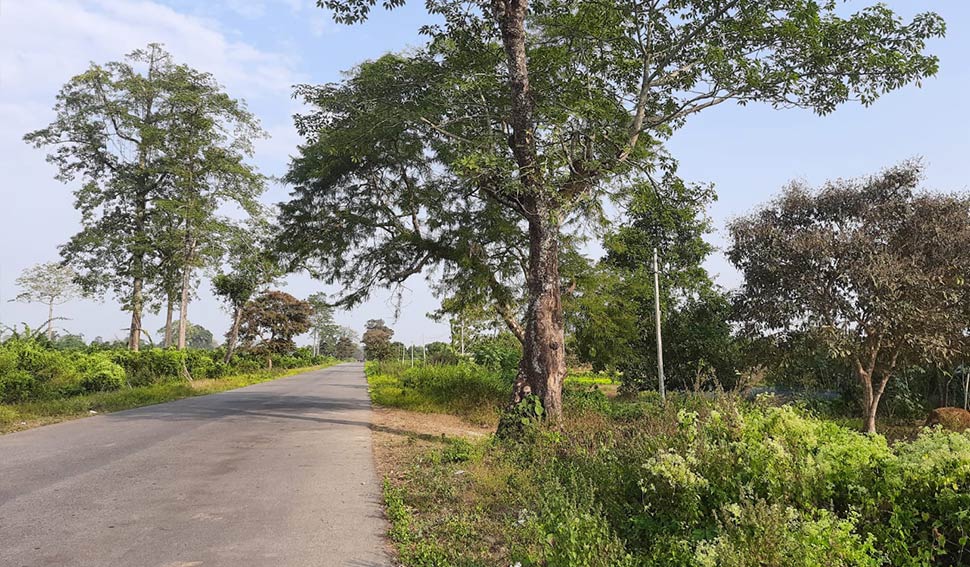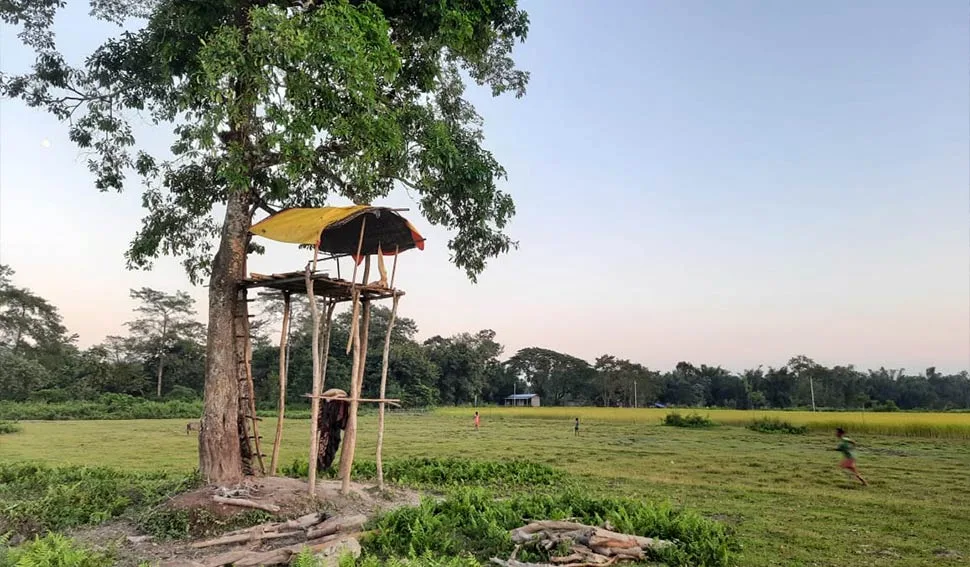PWD roads, govt schools, polling booths inside Assam’s Sunai Rupai Wildlife Sanctuary: NGT seeks response from Centre, state

Assam government has constructed 5 PWD roads, 38 government schools approved by Sarba Siksha Abhijan (SSA) Mission and 38 polling booths inside Sunai Rupai Wildlife Sanctuary, amid hue and cry for eviction of encroachers from reserve forest in the state.
This was revealed in an affidavit filed by the Assam government before the National Green Tribunal (NGT) on May 2.
The affidavit speaks of the hallow promises of the Assam government for green budgeting and environmental protection.
In addition to this, the state government had issued land pattas to more than 1,300 encroachers out of 40,000 people who have been settled in the Sunai Rupai Wildlife Sanctuary violating all official norms.
All these have been done at the very nose of former principal chief conservator of forest (PCCF) Mahendra Kumar Yadava, presently the special chief secretary (forest) of the Assam government.
The schools, which had been approved by then additional deputy commissioner Pulak Kumar Mahanta in 2016-17, have been used as polling booths.
The NGT has taken up the case based on a petition filed by RTI activist and president of Aranya Suraksha Samity Dilip Nath on September 23, 2023.
In an order, the judicial member, Justice B Amit Sthalekar and expert member Arun Kumar Verma have directed the Assam chief secretary to file an affidavit giving details of officers who permitted such extensive construction in gross violation of the Forest (Conservation) Act, 1980.
“The affidavit must also explain the inaction of the principal chief conservator of forest (PCCF) under whose very nose such illegal activities were allowed to go on since 2017,” the NGT said in its order.
In his petition Dilip Nath alleged gross violations of the Forest (Conservation) Act, 1980; Assam Forest Protection Force Act, 1986; Wildlife (Protection) Act, 1972; Scheduled Tribe and other Traditional Forest Dwellers (Recognition) of Forest Rights Act, 2006 and Article 21 of the constitution of India at Sonai Rupai Wildlife Sanctuary (SRWS) in Sonitpur district of Assam.
Located along the foothills of the Great Himalayan Range, Sonai Rupai was declared a wildlife sanctuary on October 12, 1998.

This sanctuary was once famous for the bonsun tree (Phoebe hainesiana), which is now rarely seen in the sanctuary.
“But old glory is no more. More than 40,000 people have been settled in the wildlife sanctuary. After the BJP-led government came to power, it created some forest villages for allotment of the land to the families, in which state minister Ashok Singhal and Bodoland Territorial Region (BTR) chief Pramod Boro took the lead,” Nath said.
Singhal represents Dhekiajuli constituency, under which Batachipur falls.
The government said the land allotment was done according to the provision of the Scheduled Tribes and Other Traditional Forest Dwellers (Recognition of Forest Rights) Act, 2006 flouting all official norms.
According to the official record, 85 sq km of 220 sq km area of the wildlife sanctuary is under encroachment. The green cover of the wildlife sanctuary has been fast depleting due to large-scale encroachment.
“Because all these are encroachers and not traditional forest dwellers. The forest department has launched seven eviction drives to evict these people from the wildlife sanctuary,” Nath also said.
“There are only 14 recognised forest villages in Sonpitpur district. How can the department create a new forest village? These people have been living inside the wildlife sanctuary under the patronage of political leaders since 1998,” Nath also said.
Nath alleged that large-scale construction activities have been going on in the wildlife sanctuary, which has now turned into a human settlement.
“As the forest land has gone to the hand of encroachers, the entire Sonitpur district and the north bank of the Brahmaputra have to bear the brunt of human-elephant conflict,” Nath further alleged.
In response to the NGT order, the state government informed the NGT bench that some government schools have been functioning inside SRWS and Charduar Reserve Forest (CRF).
The government stated that an FIR has been registered by the local forest authorities against the school management committees (SMC) of these schools.
The affidavit also admitted that the irrigation department was constructing a sluice gate on the Siloni River inside CRF in violation of the rules. An individual even started a tea garden inside the WLS, the affidavit added.

Further a contractor had constructed a 5-km-long road inside SRWS in violation of the Wildlife (Protection) Act and Forest (Conservation) Act and an FIR has been registered against him.
The affidavit stated that several polling stations under Dhekhijuli, Sootea and Rangapara assembly seats were also set up inside the forest land and the public health engineering (PHE) department had installed ring wells in the same wildlife sanctuary.
In its order, the NGT noted that while the affidavit carried details of illegal activities inside the wildlife sanctuary and forest reserves, there was no mention of actions taken to remove encroachments and constructions to restore the forest.
“Whether it has been dismantled and forest restored has not been stated for reasons best known to the joint secretary, who has filed the affidavit,” the order read.
The NGT also directed the Ministry of Environment, Forests and Climate Change to file a counter-affidavit within four weeks mentioning action taken against officers who allowed the illegal constructions and steps taken to remove them.
The NGT will hear the case on July 3.

Leave a Reply